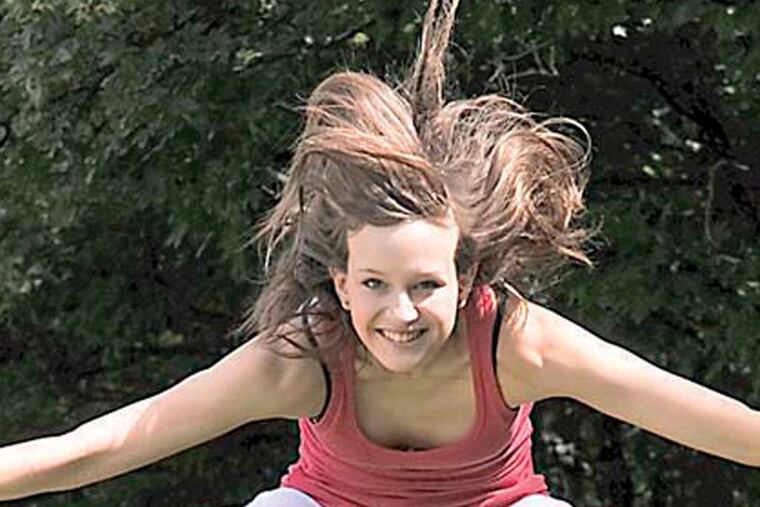Cheerleaders suffering on the sidelines
Dr. Rima Himelstein, adolescent medicine specialist at Crozer-Keystone Health System, wrote this for Philly.com's "Healthy Kids" blog. Whatever you call it, cheerleading today is cartwheels away from what it once was.

Dr. Rima Himelstein, adolescent medicine specialist at Crozer-Keystone Health System, wrote this for Philly.com's "Healthy Kids" blog.
Whatever you call it, cheerleading today is cartwheels away from what it once was.
Rewind to a Princeton football game in 1884, when a man gave the first official cheer to encourage his team. In 1923, women joined in. In the olden days, cheerleading, though not extremely vigorous, was athletic - involving toe-touch jumps and splits.
Jump to the present: Cheerleading has reached a new level. More than 400,000 American high school cheerleaders routinely perform fast-paced, complex acrobatic stunts and tumbles. Cheerleading combines "the strength of football, the grace of dance, and the agility of gymnastics," according to the American Association of Cheerleading Coaches and Administrators.
Like other athletes, cheerleaders sometimes lose their balance. Wrong moves happen most commonly during stunts when they are lifting, tossing, and catching their teammates. And with stunts known as pyramids, whirlybirds, and superman – face it, injuries happen! Within 30 years (1980-2007), cheerleading-associated ER visits rose fivefold. In 2007 alone, there were 26,786 ER visits; 98 percent of patients were treated and sent home, but 221 were hospitalized, 217 were treated and transferred to another hospital, and 64 were held for observation.
Cheerleaders suffer a disproportionate number of catastrophic injuries. Although most injuries are sprains and strains, some are much more serious and even devastating when they result in permanent brain injury, paralysis, or death. Cheerleading accounts for more than 65 percent of the catastrophic injuries that high school and college female athletes suffer. Most of the injuries result from stunts that involve tumbling, falling from heights, or being a supporting base. Pyramid stunts are especially risky and are responsible for most head and neck injuries. Risk factors for cheerleading injuries include having a previous injury or a high body mass index, cheering on hard surfaces, performing complicated stunts, and having a poorly trained coach.
Some people argue that cheerleading is just an activity. Many groups, like the National Collegiate Athletic Association, do not consider cheerleading a sport, mainly because not all teams compete.
On the other side are those like the National Cheer Safety Foundation, which advocates for making cheerleading a recognized sport and establishing universal safety standards. Yep, I'm on their team! Pediatricians agree: Safety is No. 1. To make cheerleading safer, the American Academy of Pediatrics recommends:
Recognizing cheerleading as a sport in all states.
Providing access to qualified coaches with expertise in cheerleading.
Giving cheerleaders preseason physicals and ongoing injury surveillance.
Training cheerleaders in spotting techniques and making sure they demonstrate appropriate skills before attempting stunts.
Performing stunts only on spring/foam floors or grass/turf surfaces.
Limiting pyramid height to two people.
Removing from practice or competition anyone with a possible head injury; requiring clearance from a health professional before returning.
The National Federation of State High School Associations lists 32 states that recognize cheerleading as a sport. Three cheers for Pennsylvania for being among them.
"Here we go!" New Jersey and "Here we go!" Delaware are not on the list, and they need some cheering to do better.